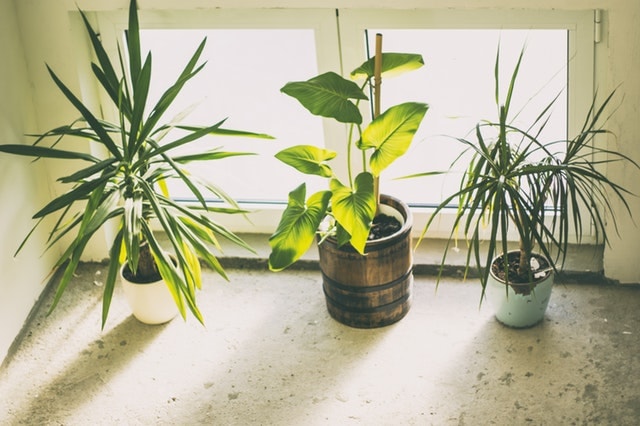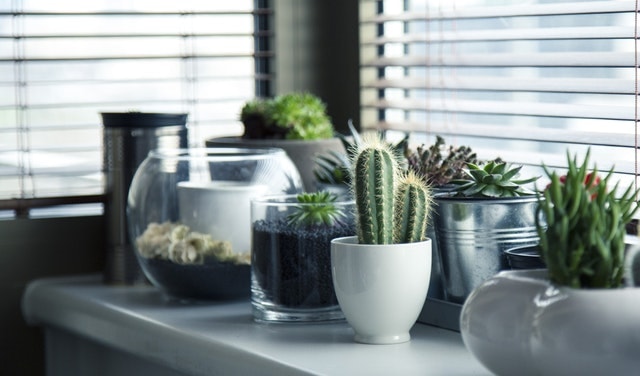Last Updated on 2 years by Namrata
Lemongrass, a tropical and warm climate herb. It is also a fast-growing ornamental grass that is appetizing in your teas, soups, and stir-fries. Those who have lemongrass in their garden cannot neglect its beauty and aroma. Besides, it can enhance the beauty of the field in autumn when it turns yellow or brown. Lemongrass grows with numerous stalks rising from the equivalent base. It can develop up to five feet tall with an extent up to three feet wide. It is an upright arching shape, and beautiful green leaves are appealing to our eyes. But the fascinating thing about lemongrass is when the stalks grow, you can find a soft center inside them. You can chop it and add it to your meals to get a marvelous flavor.
But do you know how to plant it appropriately? Well, it can survive in full sun if you give it a well-drained soil mixture incorporated with enriching compost. You need to select the planting pot according to your preference, and if you want to plant it on beds, keep a gap of 24 inches beside each lemongrass sapling. Water the plants frequently in the summer season and ensure that the roots do not dry out. Besides, lemongrass grows slowly in the winter season. So, you must water just a few times over to keep the roots moist.
You can grow lemongrass from cuttings. Just cut the stalk with a knife and plant it in a glass of water to regrow and change the water daily. You will notice roots forming within 7 days. You can plant the saplings after 2-3 weeks anywhere.
Lemongrass faces several problems. Sometimes you might see its leaves turn yellow, or they are dropping seamlessly. In these cases, you need to understand the root of these problems and maintain the plants accordingly with fertilizers and care. But how will you know all these? Well, you need to go through the below segment to learn them. It will cover all the information from the yellow leaves problem, and dropping issues to taking care of lemongrass plants. So, let’s jump into the below segments.
Why are my lemongrass leaves turning yellow?
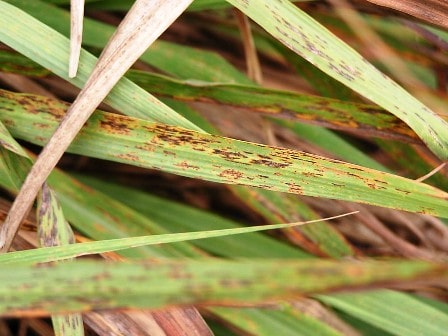
You will find this problem not only bothers you but other people also if you search on Google. But before coming to any discussion, you must understand the problem from the very beginning. Usually, lemongrass turns yellow due to insufficient water and fertilizer. So, you should offer them enough water and enriched fertilizer frequently. But if water and fertilizer are not the reason for the yellow of the leaves, you can be assured your plant, suffering from fungal disease. So, you can see that there are three primary reasons behind the leaves turning yellow. Read the below section to know more about these.
- Water deficiency
The most common reason behind the lemongrass plant turning yellow would be insufficient water. These plants are native to India and Sri Lanka, and they prefer to grow in high rainfall and humidity-based areas. They automatically absorb rainwater and can survive in the summer season. So, you can see that they require constant watering conditions if you plant them in a southern–eastern country. But that does not mean you can plant them there. You only need to provide well-drained soil and require following the below procedures to make them survive in your region.
- Spray lemongrass with water minimum of 4 hours a day to keep the humidity
- Keep the roots cool by burying a clay pot with water beneath the plant.
- Lack of fertilizer
Lemongrass demands nitrogen and prefers PH neutral and well-drained soil. Lack of these will be the reason for lemongrass turning yellow. If you can give them around 6.5-7.0 PH-based soil mix, lemongrass will not demand other fertilizer. All you need to do is understand the soil of your area. If it is acidic, use Epsom salt or if the soil is too alkaline, give pure compost to adjust the PH level. Remember that if you provide proper fertilizer, you can get rid of the problem at bay.
- Fungal disease
Though you take proper care of your lemongrass plants through watering and fertilizing, the problem might be other. If the leaves are still turning yellow, rule out water and fertilizer-related issues as it might be a fungal disease. In the case of a fungal attack, the result is catastrophic. You might notice lemongrass leaves turning yellow with several spots. You might even see some leaves changing completely yellow. As a result of these hindrances, your plant could die. So, what is the solution to get rid of this? To manage the issue, prune out the attacked leaves and burn them. Besides, use plastic or straw for mulching and spray fungicide every week. Remember to never plant lemongrass close to each other as it might spread the disease quickly. So, if you want disease-free lemongrass plants, watch them regularly and take care properly.
Why is my lemongrass droopy?
After giving sufficient water, fertilizer, and fungicide, you might wonder why your lemongrass is still droopy. There are numerous reasons behind this which are as follows.
1. Water-related issues
As a gardener, you might know giving enough water can lead to drooping plants. If you provide too much water, the soil cannot drain properly regardless of whether the soil is well-drained or not. Other than this, if the plant has gotten root-bound, it can droop. It is because there is no space left in the container or pot to hold the required water. To avoid these issues, you should alter your watering routine according to the plant’s needs.
2. Insects-related issues
If the problem is not water-related, look for insects, as numerous sap-sucking bugs are behind your lemongrass droop. Several mealy bugs, aphids, and scale drink the plant’s fluid, and as a result, it drives to the identical loss of water pressure as you notice with dry soil. You will see the aphids on the undersides of the leaves and mealybugs on the branch. They slowly absorb all the fluids from your lemongrass and lead to a drooping problem. But with the assistance of insecticide and fungicide, or homemade soap spray, you can kill them and provide your plant with a healthy life.
3. Support-related issues
Sometimes your lemongrass is too big to stand straight. When the plant begins to sag over, it is just getting too heavy for itself. So, you must provide support with a stick and thread to remove drooping issues. But remember, while doing so, you should not harm its roots. You can fix the rod outside the pot to eliminate this problem.
4. Stem-related issues
A drooping situation occurs when the stem is problematic. So, examine the stem and check whether it has any damage or not. If you found any kink in it, provide support and straighten it out. After a few days, if it does not heal by itself, cut it down and let the rest of the lemongrass keep growing.
How to revive lemongrass?
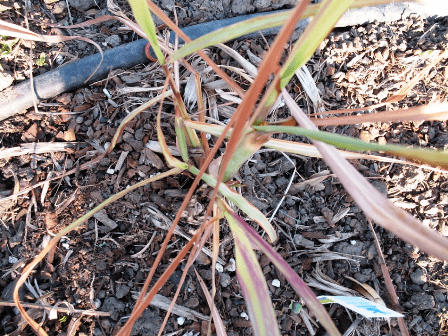
From all the above explanations, it is crystal clear that your lemongrass might die due to a lack of water, fertilizer, and fungal attacks. Besides, lemongrass goes dormant in winter, and it looks like it is dying. In that period, you need to water it well, provide any nitrogen-based fertilizer, and remove the fungus-affected areas from your lemongrass to offer it a healthy dormant life. Learn the reasons in detail to protect it from dying and offer it healthy growth. So, let us analyze the below factors.
- Watering
Lemongrass is a native of a sub-tropical area. It prefers more water than several plants, and if left to dry out, it can die faster than your imagination. So, insufficient water is one of the primary reasons behind its death.
- Feeding
If you do not feed your lemongrass sufficient nitrogen-based fertilizer, it can die quickly. It requires frequent admittance to nitrogen to maintain its healthy growth. So, lack of feeding might result in its death eventually.
- Soil mixing
Poor soil mixture can lead to your lemongrass death. So, always give a fresh start to your lemongrass by offering it a well-drained and balanced PH level-based soil. You need to mix the earth with at least one year of aged cow manure and any compost to provide the plant with extra nutrients. Lack of drainage system and inadequate soil mix might harm the plant and result in its death after some time.
- Fungal attack
The fungal attack is one of the most common lemongrass death issues. A fungus named rust takes over the entire plant and promotes several health hazards. They are also responsible for turning the leaves yellow and the plant’s demise. Remember that it is the most severe lemongrass death issue, which needs frequent attention and proper care.
How to maintain lemongrass plants indoor or outdoor
Like several indoor or outdoor plants, maintaining lemongrass plants is simple. It only requires a little knowledge of watering, and feeding and needs frequent attention. Anyone can grow it with ease if they follow some basic principles.
Lemongrass loves lots of light, humidity, and moisture. If you can offer this, your lemongrass will grow beyond your imagination. But you need to follow some fundamental methods to do so. Go through the below section, as it will cover all the information related to lemongrass plant maintenance.
- Soil
Soil is an essential thing if you want to grow your lemongrass appropriately. The plant favors loamy and rich soil. As a result, you need to mix the earth using cow manure, compost, leaf mold, or kitchen waste. These ingredients have lots of different nutrients that can help your plant in several ways. Besides, mulch the pot with straw or plastic to protect the plant from insects.
- Water
You must keep the soil moist by giving sufficient water to the plant. If you do the mulching, it can help the earth oil to absorb the needed liquid. So, if you do not pay frequent attention or go out on vacation, your lemongrass can withstand drought and stay healthy.
- Fertilizer
As you know, lemongrass likes nitrogen. So, use fertilizers having enough nitrogen, or you can give it manure tea to offer other nutrients.
- Potting
Always pick a deep and large container or pot to accommodate your lemongrass healthy root system. When potting the plant, it can protect it from tipping over.
- Light
Lemongrass can grow in full sun. It requires six hours of direct sunlight every day to promote better growth. So, if you want to keep it in the shade, you can do it after the speculated time.
- Humidity
The plant can withstand night temperatures up to 60 degrees. Besides, it is a frost-sensitive plant. So, if you think about keeping lemongrass indoors, you need to take it inside before the temperature drops to 40 degrees Fahrenheit.
Best homemade fertilizer for lemongrass
The veteran gardener prefers to give their plant several homemade fertilizers. They are toxin-free, and if you serve a little bit of extra fertilizer, it will cause no harm to your coveted plants. So, before feeding your lemongrass, you should prepare the compost yourself. You do not need to purchase expensive readymade manures for this. There are numerous natural fertilizers you can make using various items from your kitchen or backyard. The DIY fertilizers are as follows.
- Kitchen waste
According to many successful gardeners, nothing can beat the power of kitchen waste if you want to grow the lemongrass plant naturally. You only need to take a container and fill it with pantry waste. You will see homemade compost at the end that has multiple nutrients in it. The most beneficial advantage is that you can use it for 1-2 years. It can keep the soil moist and promote the better growth of your lemongrass.
Profitable kitchen waste includes several things, but the most vital ones are eggshells and banana peels. Eggshells lower the acidic level of the soil. It has 93% calcium which is a helpful nutrient for the lemongrass plant. Additionally, banana peels are rich in potassium which promotes healthier growth for every plant.
- Tree leaves
Tree leaves have several benefits. It has essential minerals, keeps the soil moist, attracts earthworms, and makes soils lighter. So, rather than wasting them, collect and store them in a container and keep them aside to get compost after a few months. Besides, you can crush some leaves and mulch the surface of the soil to retain moisture and protect the lemongrass plant from insects.
- Grass clippings
If you clip the grass in your garden, collect them and use them as fertilizer. As you know, lemongrass loves nitrogen. Grass clippings are rich in nitrogen and thus helpful for the plant. Additionally, you can use them for mulching also.
- Manure
You can make manure from different sources. Irrespective of the origin, each compost has a lot of nitrogen that helps to promote the better growth of the lemongrass plant. You might deposit cow, horse, or chicken dung in a container and sprinkle some water every week to get homemade manure. But remember, while feeding the manure to the plants, you must give less amount as they can burn your plant.
- Coffee grounds and tea leaves
Both have many nutritional values for plants. Coffee grounds provide the required acids to the plants, and tea leaves are a source of nitrogen. You do not have to do much to prepare these homemade fertilizers. You can sprinkle the used coffee grounds and tea leaves over the soil or take a bucket with water and soak any of them for a week. After that, you can give the liquid fertilizer to your lemongrass plant.
Wrapping it up
Lemongrass is a versatile plant that can make several recipes delicious. As you can grow them in your garden, give your dishes a restaurant-like flavor. Just give them sufficient water, feed them with your homemade or purchased fertilizer, and protect your coveted lemongrass plants from insects and fungal attacks. Besides, pay close attention to the plant’s requirements and closely follow whether it suffers from any damages or not.
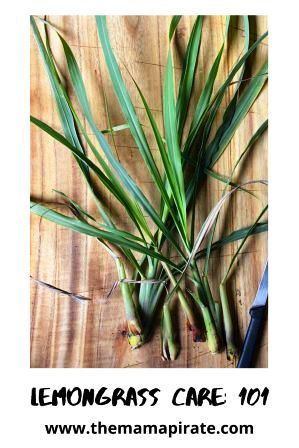
MORE POSTS:
How to Grow Lemongrass Indoors
How to propagate dracaena draco

